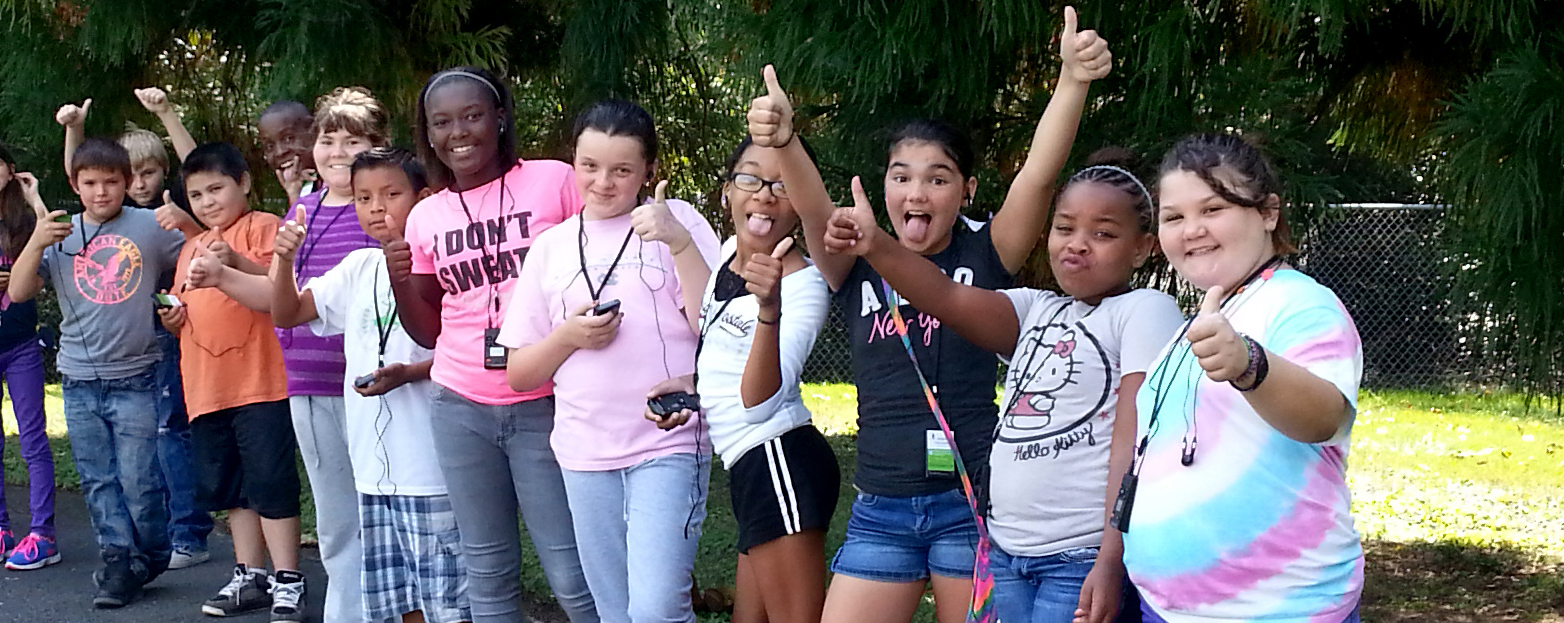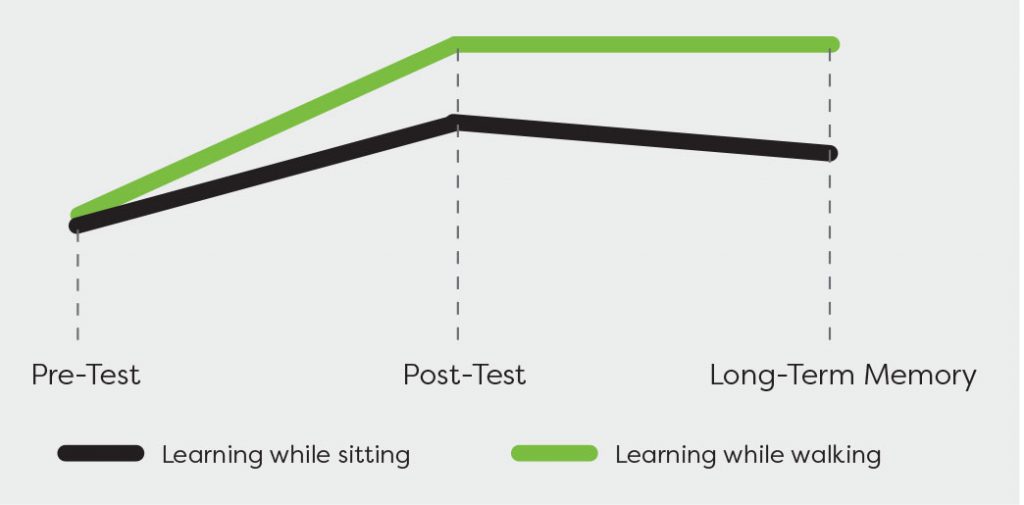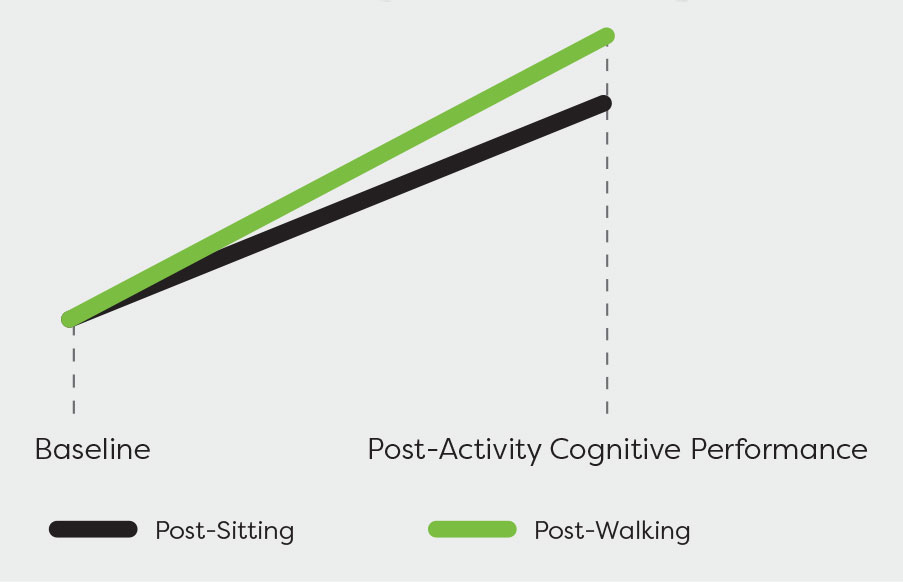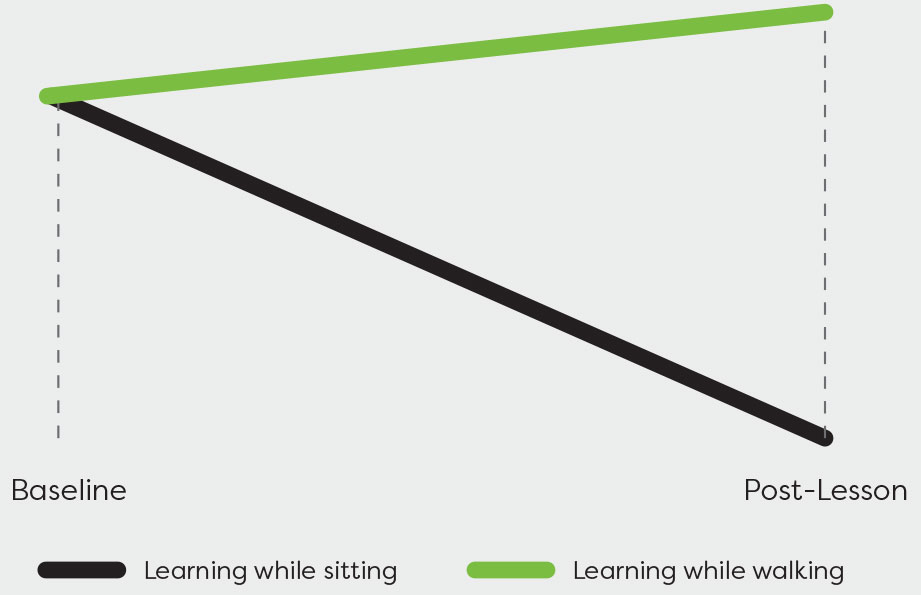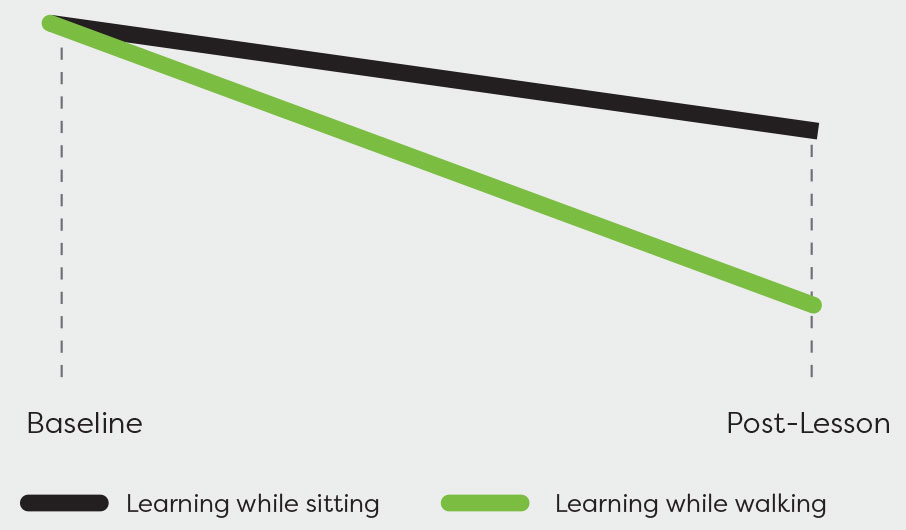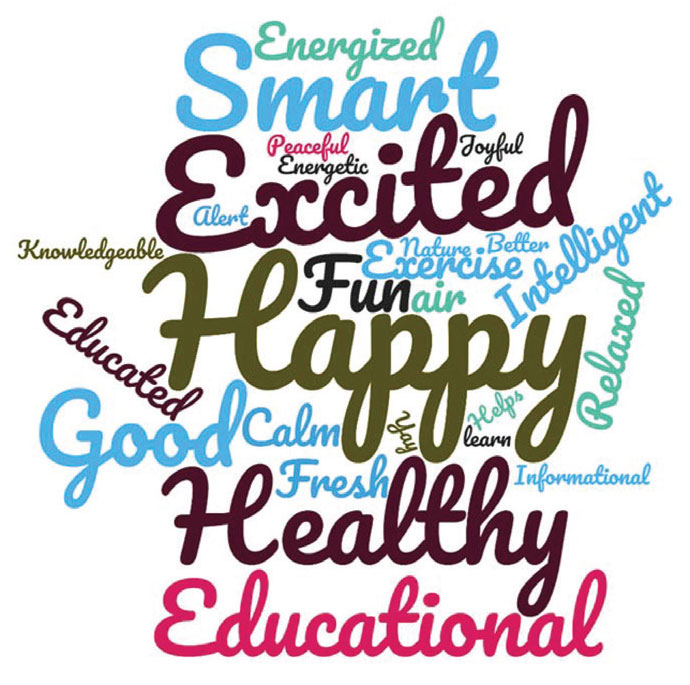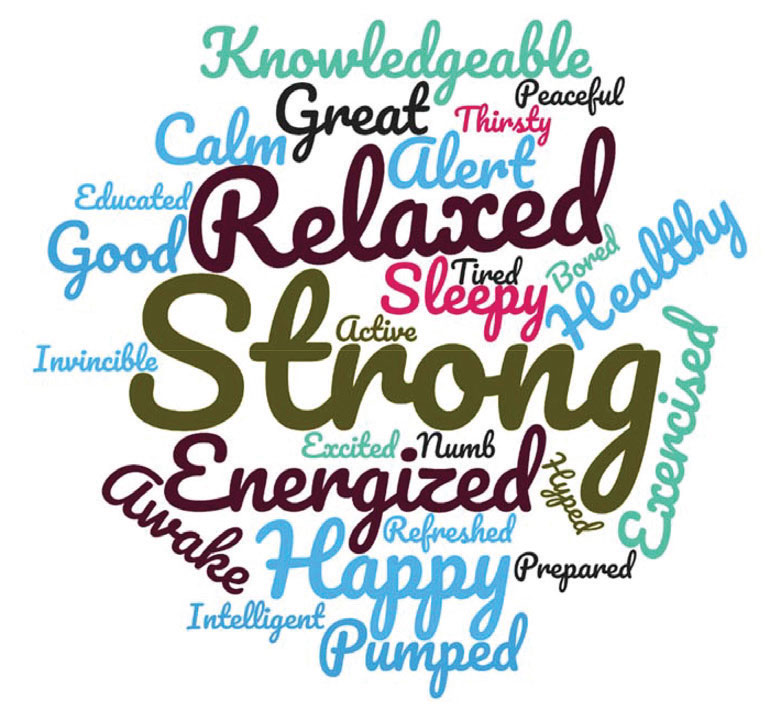Two research studies assessed the impacts of The Walking Classroom program. The first study focused on student short and long-term learning retention, post-activity cognitive performance, and mood. (See Classroom Impact Study tab below.) The second study analyzed the program’s impact on student health literacy and levels of physical activity before and after a school year of Walking Classroom programming. (See Health Literacy Study tab below.)
Walking improves student learning and retention!
Research Study Details
Research Team:
Erianne Weight, Ph.D., and a team of researchers from the University of North Carolina at Chapel Hill
Study Purpose:
To test the impact of learning during physical activity on student short-term and long-term learning retention, cognitive performance, mood, and attitudes toward learning.
Participants:
319 4th and 5th grade students from four public schools in a single North Carolina county were included. This sample was representative of the grantee population of Walking Classroom users. The average percent of students eligible for free/reduced lunch was 81.25% (2 schools at 99%), and the average end-of-grade reading test proficiency was 40.75% (ranging from 28% to 52%).
Testing Dates:
Spring 2018
Methodology:
Students completed a series of measures over four testing periods to assess learning (via podcast quizzes), mood (via PANAS-10), cognitive performance (via 3-minute timed multiplication tests), and attitudes toward learning (via lunchtime focus groups). The testing was gathered at baseline (one week prior to podcasts), post walking and listening to podcasts, post sitting and listening to podcasts, and one week after the podcasts were delivered (to measure learning retention).
Report Downloads:
Research Results
1—Walking improves student learning and retention
Students demonstrated significantly higher levels of learning while walking and listening to podcasts vs. levels of learning when sitting while listening to podcasts, both in short-term, and long-term retention, as measured by performance on the 10-question comprehension quiz on podcast content.
In addition, walking had a significant positive impact on cognitive test performance as measured through a 3-minute multiplication test administered post-walk.
2—Walking improves student mood
All positive-affect markers increased after walking and listening to podcasts and decreased after sitting and listening to podcasts.
Similarly, negative-affect markers all decreased after walking, demonstrating a strong positive influence of the Walk, Listen, and Learn program on student mood and attitudes toward learning.
Student Positive Affect after Sitting and Learning vs. Walking and Learning
(happy, excited, strong, enthusiastic, alert)
Student Negative Affect after Sitting and Learning vs. Walking and Learning
(nervous, irritable, mad, sad, upset)
3—The Walking Classroom helps students feel happy and strong
Students reported feeling happy, healthy, educated, smart, and excited while walking and learning.
After walking and learning, students felt strong, relaxed, energized, happy, and alert.
Word size above correlates with frequency of words mentioned by students within the discussion.
The Walking Classroom improves student health literacy and physical activity
Research Study Details
Research Team:
Erianne Weight, Ph.D., and a team of researchers from the University of North Carolina at Chapel Hill
Study Purpose:
To test the impact of The Walking Classroom on levels of student health literacy and physical activity before and after a school year of Walking Classroom programming.
Participants:
137 teachers distributed the pre-test, and 110 distributed the post-test. The total student sample was 1,062 children. Ninety percent of the student-respondents were in grades 3–5, with the remaining 10% in middle school. There were also three high school student respondents representing less than 0.3% of the sample.
Testing Dates:
Fall 2018–Spring 2019
Methodology:
Health literacy was measured utilizing questions from the established Walking Classroom podcast quizzes. Health literacy topic areas that were covered in five or more podcasts were flagged as key literacy areas. Final questions were selected and reviewed for clarity and content validity by a panel of experts including an internationally renowned exercise physiologist, a learning specialist, and an expert in survey methodology.
Physical Activity was tested utilizing the International Physical Activity Questionnaire – Short Form (IPAQ-S). The IPAQ measures utilized included vigorous and moderate physical activity and walking wherein respondents indicate during the last seven days, how many days they participated in the activity for at least 10 minutes at a time, and then how much time they usually spent doing the activity on those days. Vigorous activity was defined as: activities that make you breathe much harder than normal like running, heavy lifting, digging, aerobics, or fast bicycling. Moderate activities were defined as: activities that make you breathe somewhat harder than normal like carrying light loads, bicycling at a regular pace, playing an active game, or jogging.
Report Downloads:
Research Results
1—The Walking Classroom improves student health literacy.
Students demonstrated significantly higher levels of health literacy after one year of participation in the Walking Classroom program with end-of-year mean literacy test scores of 77.6% compared with beginning-of-year test scores of 66.9%. Positive increases in the percent of students who answered questions correctly were evident in every question with percent increases ranging from 2%–19%. The 10.7% overall increase in health literacy is particularly impressive given that health literacy messages are generally less than one minute, and most students listen to podcasts only one time.
Student health literacy knowledge was testing using the following true or false questions.
1. Exercise is important for maintaining a strong heart and preventing disease. [TRUE]
2. Exercise improves blood circulation and brings oxygen to your organs. [TRUE]
3. Walking can improve immune function and reduce your risk of getting colds. [TRUE]
4. Exercise decreases energy levels. [FALSE]
5. Research suggests that physical activity increases performance in school. [TRUE]
6. Exercise helps improve focus and concentration. [TRUE]
7. People that regularly exercise are more likely to feel stressed and depressed. [FALSE]
8. Endorphins are mood-boosting chemicals released when we exercise. [TRUE]
9. The human body is primarily water, so it is important to stay hydrated. [TRUE]
10. Our bodies only burn calories when we are moving. [FALSE]
11. Research shows that breakfast can improve concentration during school. [TRUE]
2—The Walking Classroom increases overall physical activity
Students demonstrated significantly higher levels of physical activity after one year of participation in the Walking Classroom program, with end-of-year minutes per week significantly higher than beginning-of-year measures in walking, vigorous activity, and moderate activity.
On average each week, students walked 84.5 more minutes, participated in 66.8 more minutes of vigorous physical activity, and participated in 35.3 more minutes of moderate activity.
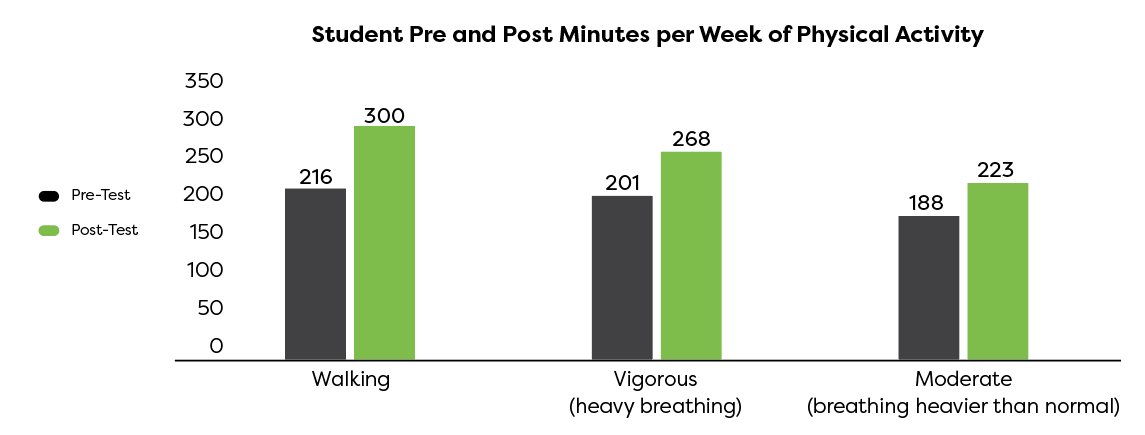
The program aligns with the “moderate” level, which is the second-highest bar for any intervention, product, or program, according to the government’s ESSA guide. This evaluation category requires that any intervention be subject first to “at least one well-designed and well-implemented quasi-experimental study.”
Quasi-experimental means there is no random control group.


